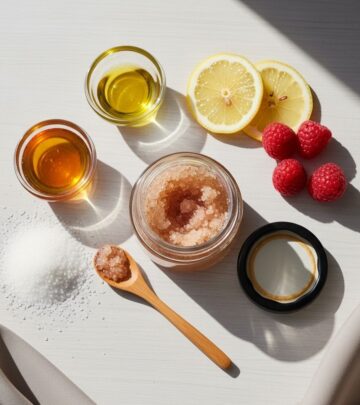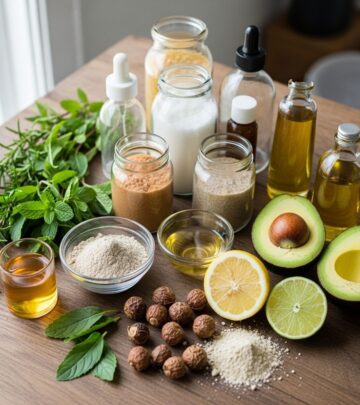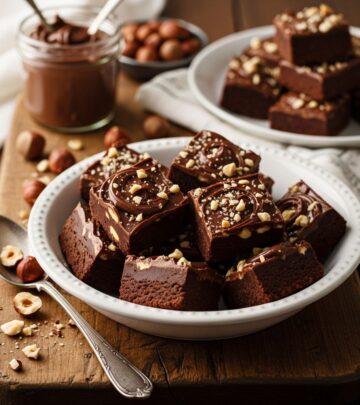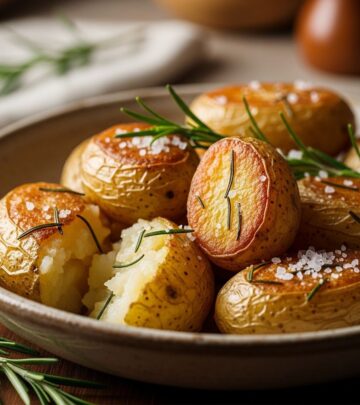Fluffy French Toast Recipe: 6 Tips For Crispy Fluffy Perfection
Start your mornings with golden perfection that melts delightfully on your tongue!
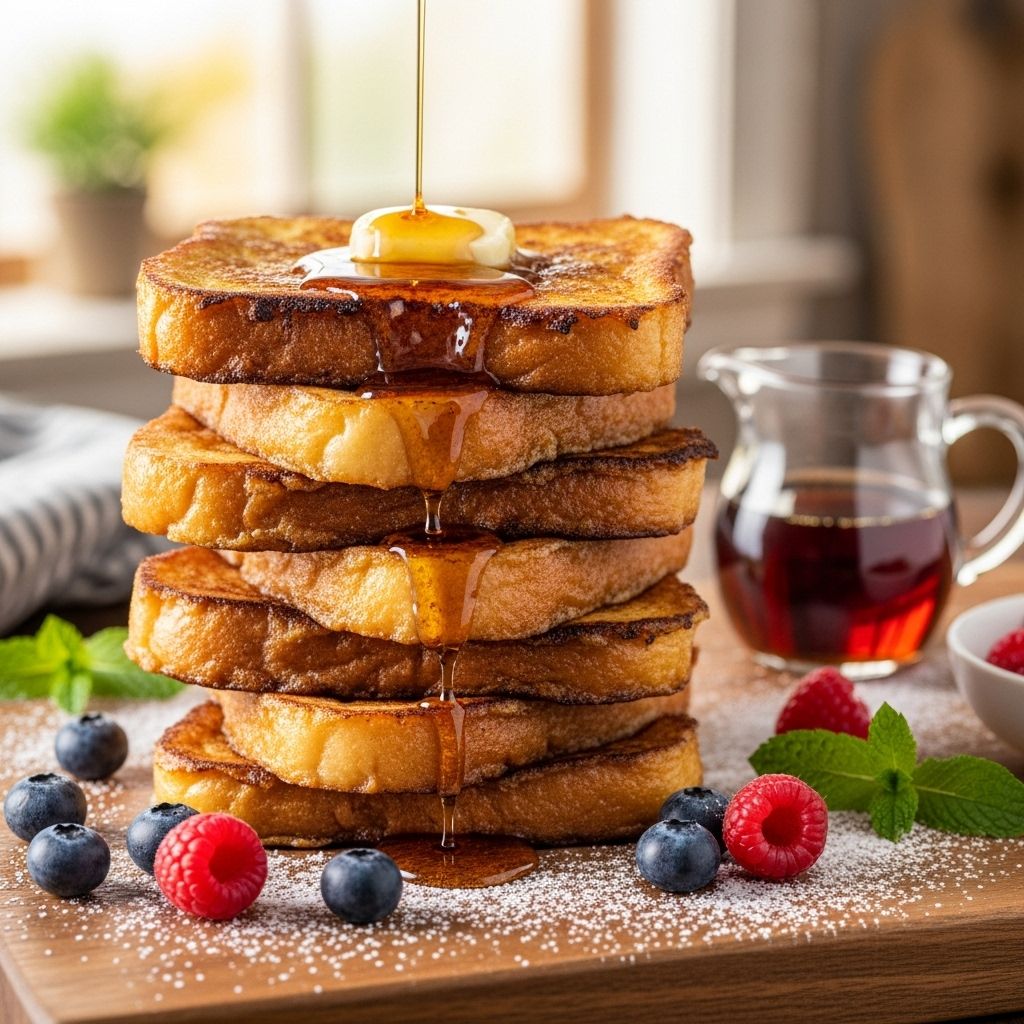
Image: HearthJunction Design Team
Fluffy French Toast: The Ultimate Guide to Crispy, Soft, and Irresistible Breakfast
There’s an unmistakable joy in indulging in a golden stack of French toast—crisp on the outside, fluffy in the center, and ready to be smothered in maple syrup or fresh fruit. This comprehensive guide to fluffy French toast pulls together all you need: essential ingredients, techniques for the perfect texture, flavor twists, troubleshooting, and frequently asked questions. Let’s take your breakfast to the next level with expert insights, handy tips, and mouthwatering serving suggestions.
Table of Contents
- What Makes French Toast Fluffy?
- Essential Ingredients for Fluffy French Toast
- Step-By-Step Directions
- Expert Tips for Best Results
- Best Breads for Fluffy French Toast
- Topping Ideas to Elevate Your French Toast
- Variations and Flavor Twists
- Make-Ahead, Freezing, and Storage Tips
- Troubleshooting Common Issues
- Nutrition Information
- Frequently Asked Questions (FAQs)
What Makes French Toast Fluffy?
If you’ve ever wondered why some French toast has that perfect pillowy texture while others turn out flat or soggy, the answer lies in the batter. The secret ingredient? All-purpose flour. When whisked into the milk and egg base, flour binds the liquids and creates a light, slightly thick batter. This coats the bread evenly and locks in moisture, resulting in slices that crisp beautifully on the outside while staying soft and fluffy within.
Alongside flour, the right balance of eggs, milk, and a touch of sugar and vanilla brings out a custardy richness, making every bite a treat.
Essential Ingredients for Fluffy French Toast
This recipe is as straightforward as it is delicious, and you likely have most of these ingredients already in your kitchen. Here’s what you’ll need:
- All-purpose flour (1/4 cup): Key to a thick, coating batter that prevents sogginess.
- Milk (1 cup): Adds moisture and richness. Feel free to swap in half-and-half or your favorite non-dairy alternative.
- Large eggs (3): The essential binder and provider of structure and that signature custard vibe.
- White sugar (1 tablespoon): A subtle sweetness that enhances the breakfast treat.
- Vanilla extract (1 teaspoon): For depth and warm, aromatic flavor.
- Ground cinnamon (1/2 teaspoon): Adds cozy warmth and aroma.
- Salt (a pinch): Boosts the flavors without making it taste salty.
- Thick-sliced bread (12 slices): Brioche, challah, French bread, or sourdough are ideal for soaking up the batter.
Optional: Use extracts like almond or rum for unique flavor twists. Try different bread types for your own signature touch.
Ingredient Substitutions
- Milk substitutes: Almond milk, oat milk, or coconut milk.
- Sugar alternatives: Honey, maple syrup, or coconut sugar.
- Bread options: Gluten-free, whole wheat, or cinnamon swirl bread.
Step-By-Step Directions
- Gather all ingredients. Be sure to have everything measured and ready for smooth preparation.
- Whisk the batter:
- Place the flour in a large mixing bowl.
- Gradually add milk, whisking continuously to avoid lumps and form a smooth, slightly thick base.
- Add the eggs, sugar, vanilla, cinnamon, and salt. Whisk until the mixture is completely smooth and well combined.
- Heat your pan: Preheat a griddle or a large frying pan over medium heat. Add a little oil or butter to prevent sticking.
- Soak the bread: Working in manageable batches, dip each bread slice into the batter, allowing it to soak up the mixture on both sides until fully coated but not falling apart.
- Cook the French toast:
- Place the soaked bread onto the hot, lightly oiled pan.
- Cook until the underside is golden brown (about 2–3 minutes), then flip and cook the second side.
- Repeat with all slices, adding more oil or butter to the pan as needed.
- Serve hot and enjoy! Plate the finished French toast immediately. Top with desired accompaniments and serve warm for the best experience.
Expert Tips for Best Results
- Use thick, sturdy bread: Hearty slices hold up best to soaking in batter and deliver the perfect texture.
- Don’t oversoak: Dip just until the bread is fully moistened to avoid a mushy center.
- Preheat your pan: A hot pan ensures the outside crisps up without the inside overcooking.
- Cook in batches: Avoid overcrowding so each slice cooks evenly and browns beautifully.
- Serve immediately: French toast is at its peak right off the pan—keep it warm in a low oven if doing a larger batch.
- Try extract swaps: Almond or rum extract can provide an exciting flavor twist, as recommended by home cooks.
Best Breads for Fluffy French Toast
Your choice of bread makes all the difference. The ideal varieties are thick, sturdy, and slightly stale (day-old bread works best), as this helps them soak up the custardy batter without falling apart. Here’s a comparison of the top choices:
| Bread Type | Texture | Flavor | Best For |
|---|---|---|---|
| Brioche | Light, buttery, and rich | Slightly sweet | Ultra-fluffy, decadent French toast |
| Challah | Soft, eggy, tender | Rich and mild | Classic, well-structured slices |
| French bread | Chewy, crusty | Neutral | Savory or sweet applications |
| Sourdough | Dense, tangy | Distinctive flavor | For a unique spin |
Tip: Even plain sandwich bread will suffice in a pinch—just ensure the slices aren’t too thin.
Topping Ideas to Elevate Your French Toast
- Classic: Butter and real maple syrup
- Fresh fruit: Strawberries, blueberries, sliced bananas, or a berry compote
- Powdered sugar: A light dusting for extra sweetness
- Whipped cream: For a dessert-like finish
- Nut spreads: Almond butter or Nutella for indulgence
- Crumbled nuts: Toasted pecans, walnuts, or almonds
- Yogurt: Add a dollop for tang and creaminess
- Savory toppings: Try ricotta and honey, or a fried egg and crispy bacon for a brunch twist
Variations and Flavor Twists
Once you’ve mastered the basic recipe, experiment with these delicious adaptations:
- Chocolate lover’s French toast: Add a tablespoon of cocoa powder to the batter and top with chocolate chips.
- Spiced autumn flavor: Use pumpkin spice or a touch of nutmeg in place of cinnamon.
- Dairy-free version: Swap in non-dairy milk and coconut oil for the pan.
- Stuffed French toast: Spread cream cheese or fruit preserves between two slices before dipping and cooking.
- Rum or almond extract: Substitute for vanilla for a unique flavor profile.
Make-Ahead, Freezing, and Storage Tips
- To keep warm for serving: Place cooked slices on a baking sheet in a 200°F (93°C) oven until ready to serve.
- Refrigerating leftovers: Store cooled French toast in an airtight container for up to 3 days. Reheat in a toaster oven or skillet for best texture.
- Freezing: Arrange cooled slices in a single layer on a baking sheet, freeze until solid, then transfer to freezer-safe bags. Reheat directly from frozen in a toaster or oven.
Troubleshooting Common Issues
- Soggy centers: Check that the bread is thick and not oversoaked. Ensure the flour is well whisked for a proper batter.
- Burnt outsides: Lower the pan heat to allow the inside to cook through without scorching the exterior.
- Eggy flavor: Use high-quality vanilla and cinnamon—these help balance the custard base.
- Bland taste: Don’t skip the salt or vanilla, and consider adding a bit more sugar for a sweeter result.
Nutrition Information
While nutrition will vary depending on bread type and toppings, here’s a general estimate per slice (without toppings):
- Calories: ~130
- Protein: 5g
- Carbohydrates: 20g
- Fat: 3g
- Sugar: 3g
- Fiber: 1g
Note: Adding butter, whipped cream, or rich toppings will increase the calorie count.
Frequently Asked Questions (FAQs)
What’s the secret to fluffy French toast?
The addition of all-purpose flour creates a batter that coats the bread and keeps the interior fluffy while the outside crisps up perfectly.
Can I use fresh bread?
Yes, but day-old or slightly stale bread is better at absorbing the batter without falling apart.
What’s the best milk to use?
Whole milk or half-and-half gives richness, but any milk—including dairy alternatives—works well.
How do I prevent soggy French toast?
Use thick-sliced bread, don’t oversoak, and ensure the batter is smooth and not too watery.
Is it possible to make this recipe dairy-free?
Simply substitute your favorite plant-based milk and use oil or dairy-free butter for the pan.
How do I keep French toast warm for a crowd?
Arrange cooked slices on a baking sheet and keep in a low (200°F/93°C) oven until ready to serve.
Can I freeze French toast?
Yes! Freeze single layers until firm, transfer to freezer bags, and reheat straight from the freezer.
What else can I add to the batter for flavor?
Try nutmeg, pumpkin spice, or different extracts like rum or almond for variety.
What are some healthy topping options?
Top with fresh fruit, yogurt, or a sprinkle of seeds and nuts for nutrition and crunch.
Summary: With its pillowy interior and crisp golden crust, fluffy French toast is a breakfast classic that’s both easy to master and endlessly customizable. The secret is a well-made batter featuring flour, high-quality eggs, milk, and flavorings, paired with sturdy, thick bread. Serve piping hot with your favorite toppings, or make ahead for a crowd-pleasing brunch. With these expert tips, your French toast will become a breakfast staple worth savoring every weekend.
References
Read full bio of Srija Burman


